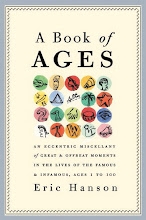
My bird's eye view of a suburban streetscape was selected for the cover of the July/August issue of POETRY magazine. It was art directed by Alex Knowlton of Winterhouse Design.
I have always loved doing bird's eye views, and having grown up in a leafy suburb of winding drives and midcentury houses I have an affection for the variety of domestic architecture found there. It's funny, because as I was growing up among the ramblers and mock colonials I much preferred the clapboard architecture of small towns. I now live in a city neighborhood that feels like a small town, and my drives into the suburbs are visits into a past that used to feel too modern.
This drawing was the first in a series following a road into the city, each panel beginning where the previous one left off, describing the relation of the houses to the road and each other, with the road creating a continuous ribbon through diverse neighborhoods, rural, suburban and urban residential, retail, business, industrial. I hope to publish them all together as a book some day. But looking at this one on its own, I realize there is a kind of poetry in the way the houses and the lives contained in them attach to the ribbon of traffic, almost like words assembled to a frame, but not quite rhyming, free verse.














